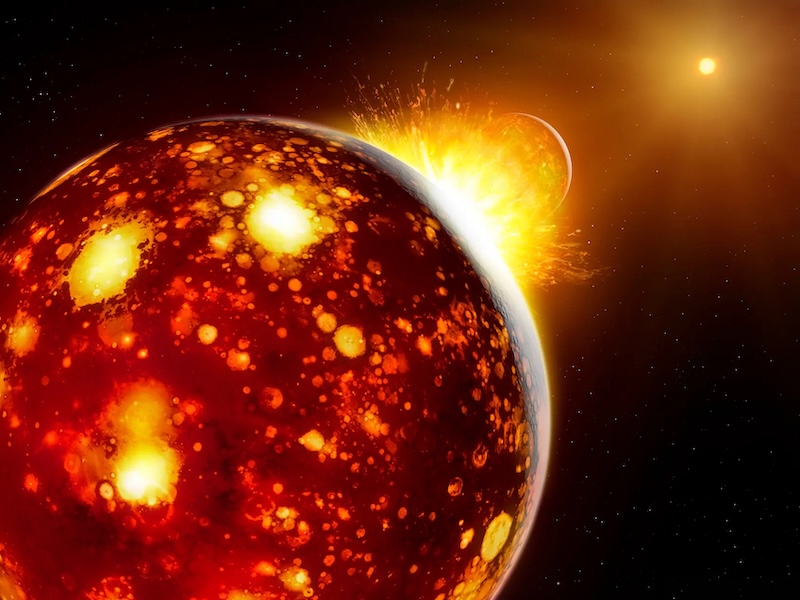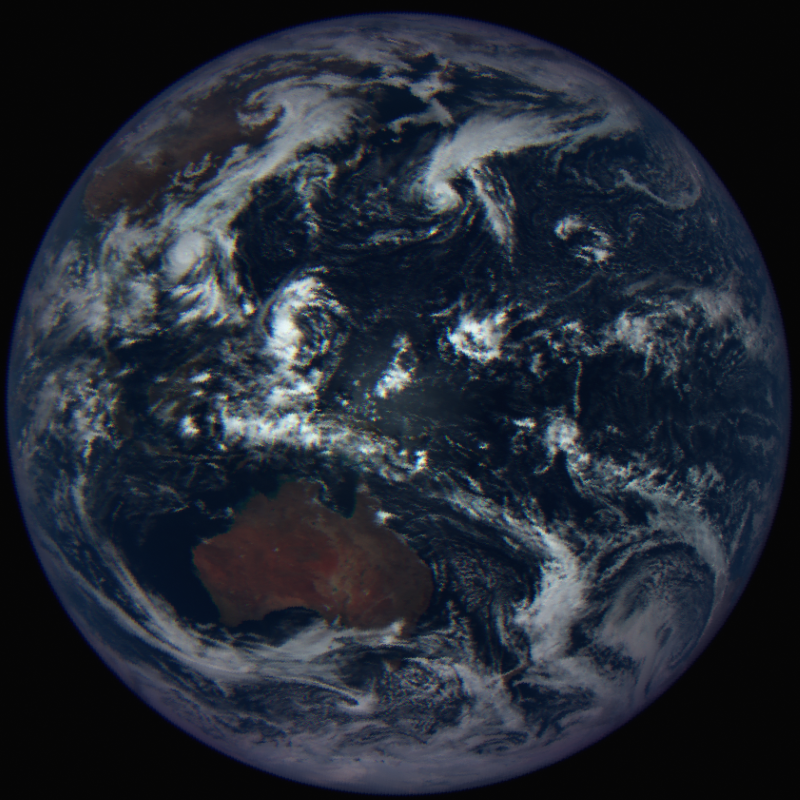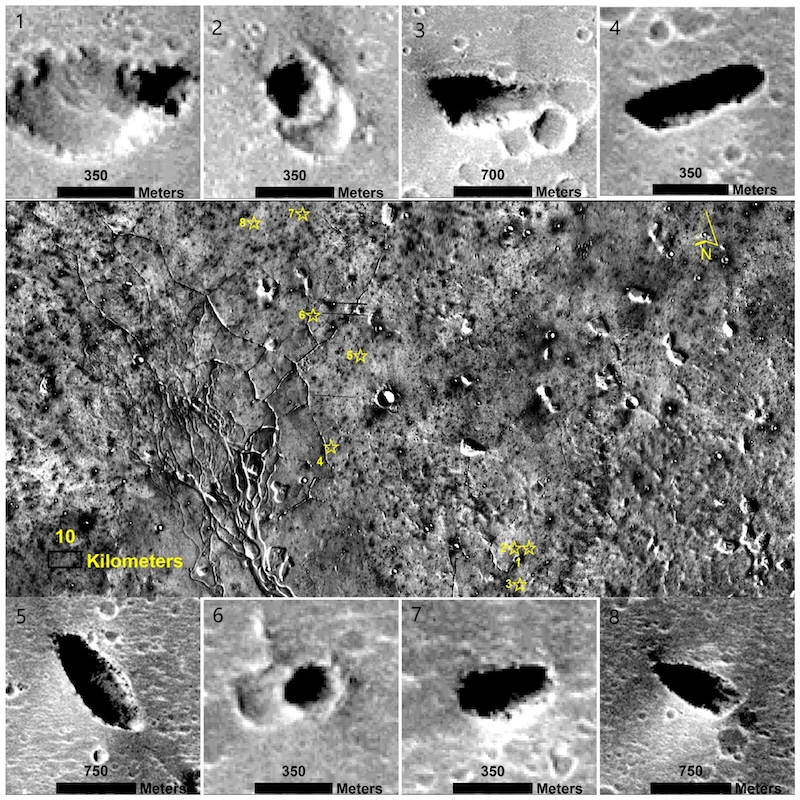Now Reading: New evidence for ocean on Mars found in ancient rivers
-
01
New evidence for ocean on Mars found in ancient rivers
New evidence for ocean on Mars found in ancient rivers
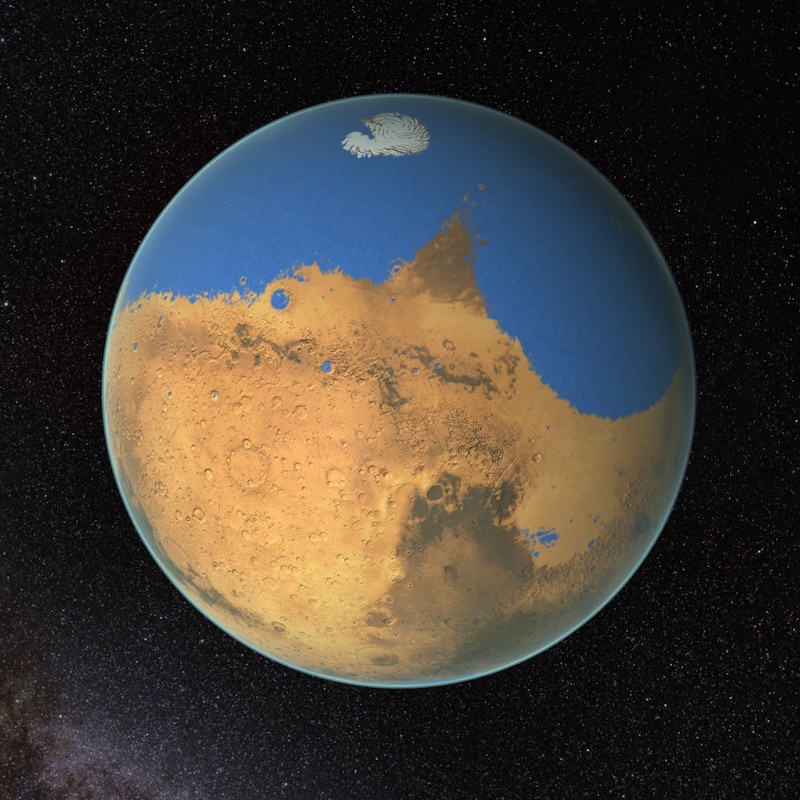
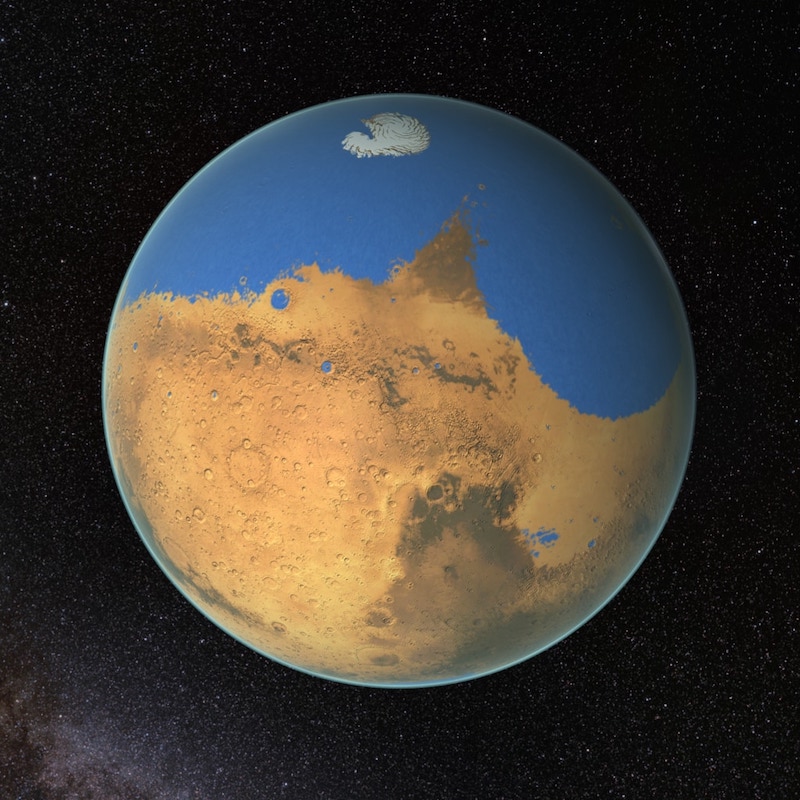
- Did Mars once have an ocean in its northern hemisphere? Evidence has continued to grow in recent years.
- Meandering Martian rivers slowed down and emptied into this ancient ocean, new research suggests.
- The rivers left behind deltas and backwater zones similar to those seen on Earth.
Rivers provide clues to ancient ocean on Mars
Did Mars have an ocean billions of years ago? Mounting evidence in recent years says it did. And now, a new study has added more data to support this hypothesis.
A team of scientists said in late September it has found strong, new evidence that rivers once flowed into an ancient ocean in Mars’ northern hemisphere.
The research centered on geological features we see on Earth, created by rivers moving from side to side and slowing down as they approach an ocean. These regions, called backwater zones on Earth, are strikingly similar to features seen on Mars where the edge of the ancient ocean would have been. They are also widespread, suggesting the Martian rivers must have emptied into an ocean or large sea.
The researchers published their peer-reviewed results in Geophysical Research Letters on June 20, 2025.
Flowing, shifting rivers
For the new study, the researchers focused on how rivers move. Rivers shift from side to side as they flow. As the water moves, sediments eat away at one side of the river bank. Then as a result, the river curves in that direction. As it does so, it deposits more sediments on the other side. Then the cycle repeats, starting from that side.
Over time, this leaves behind a region known as a channel belt, encompassing the river itself as well as markings and sediments from previous paths the river has taken.
When the river eventually reaches the ocean, it slows down. That means it carries less sediment. The sediment is then deposited where it flows into the ocean, creating a delta.
But now there’s less sediment in the flowing water, so less erosion on the river banks. And that causes the side-to-side movement to decrease as well, narrowing the channel belt. Scientists call this region the backwater zone.
Ancient rivers suggest Mars once had a vast northern ocean #EarthDotCom #EarthSnap #Earth
— Earth.com (@earthdotcom.bsky.social) 2025-10-06T18:51:37.963Z
Backwater zones along ancient ocean on Mars
If such backwater features were found on Mars, they would be good evidence for rivers emptying into an ocean. And this is exactly what the researchers found, right where the edge of an ancient ocean would have been in Mars’ northern hemisphere.
Cory Hughes, lead author of the study, said:
This is a large-scale process taking place, which is why we’re able to see it from space on Mars. These are very mature deltas. This is a strong point in favor of an ancient ocean, or at the very least a large sea.

Inverted riverbeds on Earth
The rivers on Mars dried up billions of years ago. But you can still see the riverbeds today, carved into the landscape. Some riverbeds – including ones along the ancient ocean shoreline – are harder to identify, however. This is because they, and associated deltas, now look like ridges instead of valleys. Why is that?
When a river is flowing, the coarsest sediment settles at the bottom of the riverbed. Later, if the river dries up, the sediment is buried and becomes sandstone rock. On Earth, tectonic plates push the rock to the surface. Since this rock is harder than its surroundings, wind and rain will erode the surrounding material. This leaves a standing ridge of rock. What was once a river valley is now “inverted” as a ridge. Scientists call this process topographic inversion.
Hughes and John Shaw, also at the University of Arkansas, studied the Wedington Sandstone Member (part of the Fayetteville Shale formation) in northwestern Arkansas. The towering cliffs are part of a larger network of inverted ridges. A 300-million-year-old river, which once ran from modern-day Indiana to a sea in central Arkansas, formed those ridges. In fact, this is the only known example of an inverted river delta on Earth. Hughes said:
I literally came here to study this without knowing it was in the backyard. No better word can describe that besides serendipity.
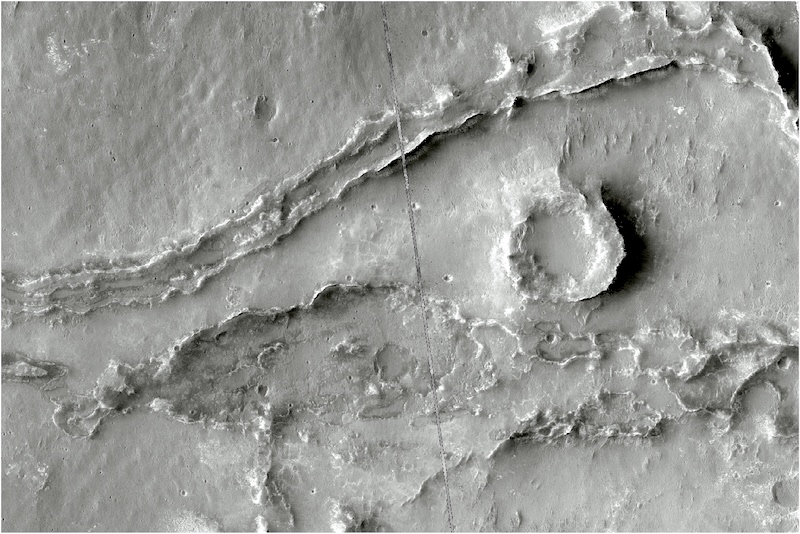
Inverted riverbeds on Mars
Mars also has these inverted ridges. But it doesn’t have tectonic plates, so how do the ridges form? Even though the hardened rock wasn’t pushed to the surface, finer-grained deposits around the sandstone were still eroded away by wind. This left behind the standing ridges, similar to the ones on Earth.
Last July, a team of researchers led by the Open University in the U.K. reported finding many more inverted riverbeds in the Noachis Terra region. They said that precipitation – rain or snow – was the source of the water that created the rivers.
And last April, another study from the University of Colorado Boulder also said that rain or snow fed many rivers and lakes on ancient Mars.
Bottom line: Researchers have discovered further evidence for an ancient ocean on Mars, in the form of backwater deposits and ridges left by rivers billions of years ago.
Read more: Vacation-style beaches on Mars? New evidence for lost ocean
Read more: New study says rain on ancient Mars fed rivers and lakes
The post New evidence for ocean on Mars found in ancient rivers first appeared on EarthSky.
Stay Informed With the Latest & Most Important News
-
 012024 in Review: Highlights from NASA in Silicon Valley
012024 in Review: Highlights from NASA in Silicon Valley -
 02Panasonic Leica Summilux DG 15mm f/1.7 ASPH review
02Panasonic Leica Summilux DG 15mm f/1.7 ASPH review -
 03How New NASA, India Earth Satellite NISAR Will See Earth
03How New NASA, India Earth Satellite NISAR Will See Earth -
 04And Thus Begins A New Year For Life On Earth
04And Thus Begins A New Year For Life On Earth -
 05Astronomy Activation Ambassadors: A New Era
05Astronomy Activation Ambassadors: A New Era -
06SpaceX launch surge helps set new global launch record in 2024
-
 07Space Force plans new ‘Futures Command’ amid pressure to speed up modernization
07Space Force plans new ‘Futures Command’ amid pressure to speed up modernization












